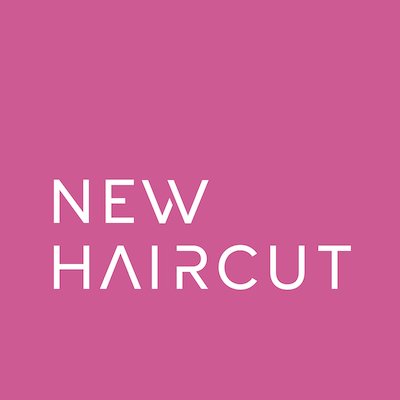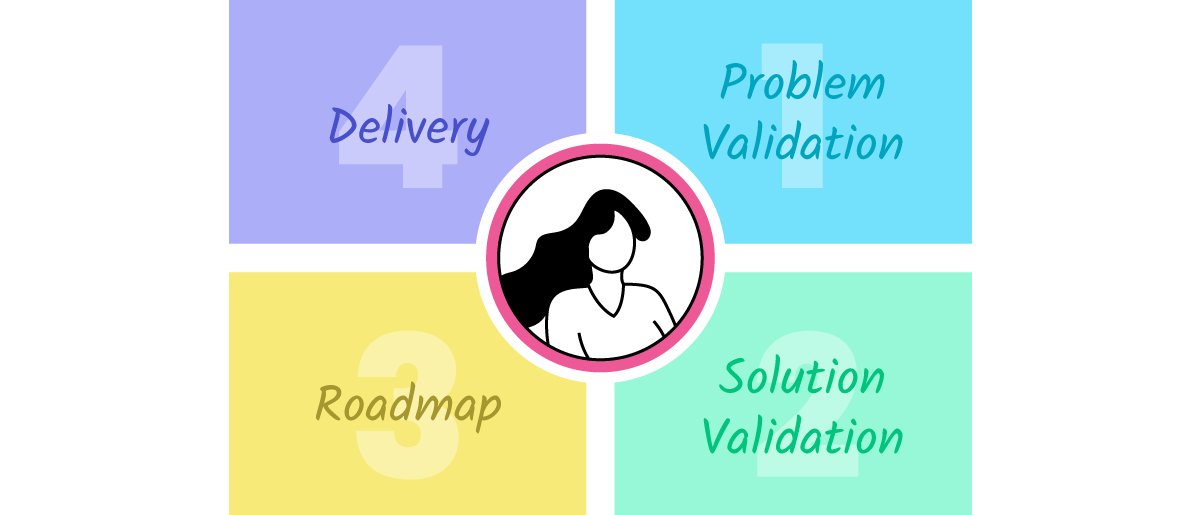Problem Framing v2: Part 1 of 4
A walkthrough of the design thinking process we use inside New Haircut to discover, prioritize, and humanize critical business opportunities. It’s our go-to practice we use prior to running a design sprint.
Head’s up! We just launched our brand new Problem Framing Toolkit— a comprehensive kit containing all of our training and do-it-yourself tools&templates to equip you to facilitate your own problem framing workshop!
Earlier this year we started a 3-part series to share our approach to Problem Framing. In between writing parts 2 and 3, several months passed in which we were constantly learning & refining. It got to the point that we had completely overhauled & upgraded the process. So rather than continue that series, we’re starting anew in order to summarize our latest and greatest thoughts on framing. More below on how this series will break down.
However before continuing, if you haven’t already done so, read Problem Framing Foundations. It will provide additional background for why problem framing is a vital step in the discovery process.
[embed]https://www.newhaircut.com/resource-library/problem-framing-foundations[/embed]
Who should read this?
The ideas, tools, and exercises within this article are the same we’ve taught to designers, PMs, researchers, and strategists from teams at Google, Nike, Verizon, Audible, Boeing, Mural, and more.
I list those job titles and big enterprise brands because it provides a lens for the types of people and companies that will most benefit from reading this series. However there’s still plenty of relevance for others outside those roles, as well as for startups and mid-market.
Finally, problem framing can be used to diagnose and work through many types of business problems. However, since mine and my team’s experience in leveraging these tools has been in the vein of building better digital products, that’s where my focus will be.
Where Framing sits within Product Development
As I previously covered, before we start thinking about validating solutions in, say, a design sprint, problem framing helps us validate there’s a problem worth solving.
This is New Haircut’s high-level view on product development. In step 1, we validate problems with Problem Framing. In step 2, we run Design Sprints during solution validation.
With this in mind, our approach to framing breaks down into 5 sequential steps:
Problem Discovery
Business Context
User Perspective
Business-to-User Mapping
Problem Reframing
New Haircut’s 5-step Problem Framing process is completed within 1 working day
And so this article series will break down as such:
(this article) Part 1: Problem Discovery
Part 2: Business Context
Part 3: User Perspective
Part 4: Business-to-User Mapping + Problem Reframing
Off we go.
Step 1: Problem Discovery
[Time allocated: 60 mins]
One of the benefits of being a startup is having the luxury of focusing intently on solving a single problem. In contrast, larger companies have dozens of problems they can and should consider attacking. They also have, at least, just as many they should not.
Problem Discovery kicks off your framing by equipping your team with the ability to answer 1 important question: which are the most potentially impactful problems for us to spend time framing? In other words, which problems are good problems to run through problem framing?
While framing is only a 1-day event, you still want to try and get the most benefit out of the process. However, because it’s so compact, even if you select a problem you wind up killing, you should simply move onto the next one without a lot of sulking.
Good problems
If we know that not all problems are good ones to spend time working on; e.g. running design sprints on, how do we separate good from bad? There’s a tool for that.
Cynefin (“keh-NEV-in”) is a Welsh word that translates to habitat or place; more specifically — a place of multiple belongings. When applied to framing, the Cynefin framework serves as a sense-making model to get clear on where problems fit in relation to your team, company, and industry.
By applying the Cynefin framework, your team can identify the good problems (i.e. those classified as Complex or Complicated) while avoiding bad problems (i.e. Simple or Chaotic), and remaining out of a state of Disorder — which is when you’re not sure which realm you’re in.
The Cynefin framework is a sense-making process that enables your team to identify good problems to work on — Complex and Complicated.
Prioritizing problems
Once you get a sense of which of your problems qualify as complex or complicated, odds are high you’ll still have several to pick from. So the next thing you’ll want to do is prioritize that subset. There are a few ways to do this.
NUF Test: A quick, efficient tactic for visually scoring (1–10) your problems by considering the Novelty, Usefulness, and Feasibility of solutions to them. Remember, you’re not solving the problem right now — you’re only having a high level discussion about the range of potential solutions and how new, useful, and feasible they would be.
The NUF Test ranks problems based on how New, Useful, and Feasible solutions would be.
2. DVF Assessment: A slight spin on NUF is DVF, which uses more formal, IDEO-esque criteria to rank problems based on their Desirability, Viability, and Feasibility.

3. (alternative) Impact vs. Effort 2x2: If scoring is not your jam or you’re working with a team that loves seeing things categorized and charted, you could also go with a 2x2. Simply plot your problems based on their relative Impact / Value (axis 1) vs. Effort (axis 2). Those with the most impact / value and least effort are your winners.
Wrapping up Problem Discovery
At the conclusion of Problem Discovery, you should have narrowed down to the top problems to spend the rest of the day running a problem framing session on.
Pitfall warning: It will be tempting to spend hours deliberating over which problem should be worked on first, second, third, etc. Avoid this by reminding yourselves that problem framing is a 4–6 hour process. The reason you’re doing it is to get more familiar with your top problems by quickly going deep with the problems you should be working on and killing the ones you shouldn’t.
Aside from moving on to sprints and product development, successful framing outcomes can also be:
That you kill the current problem and move onto the next one. That’s a BIG win vs. having spent months and millions building solutions nobody wants.
That you realize you need more time to research. Discovering gaps at this point in the process is MUCH better than being 10 miles down the road and realizing you have to start over.
So pick 1 that was prioritized at or near the top and run with it.
Read Part 2 next: Learning more about the problem’s potential impact on your company by establishing business-related context.
Completely updated tools & process (as of 2020)






